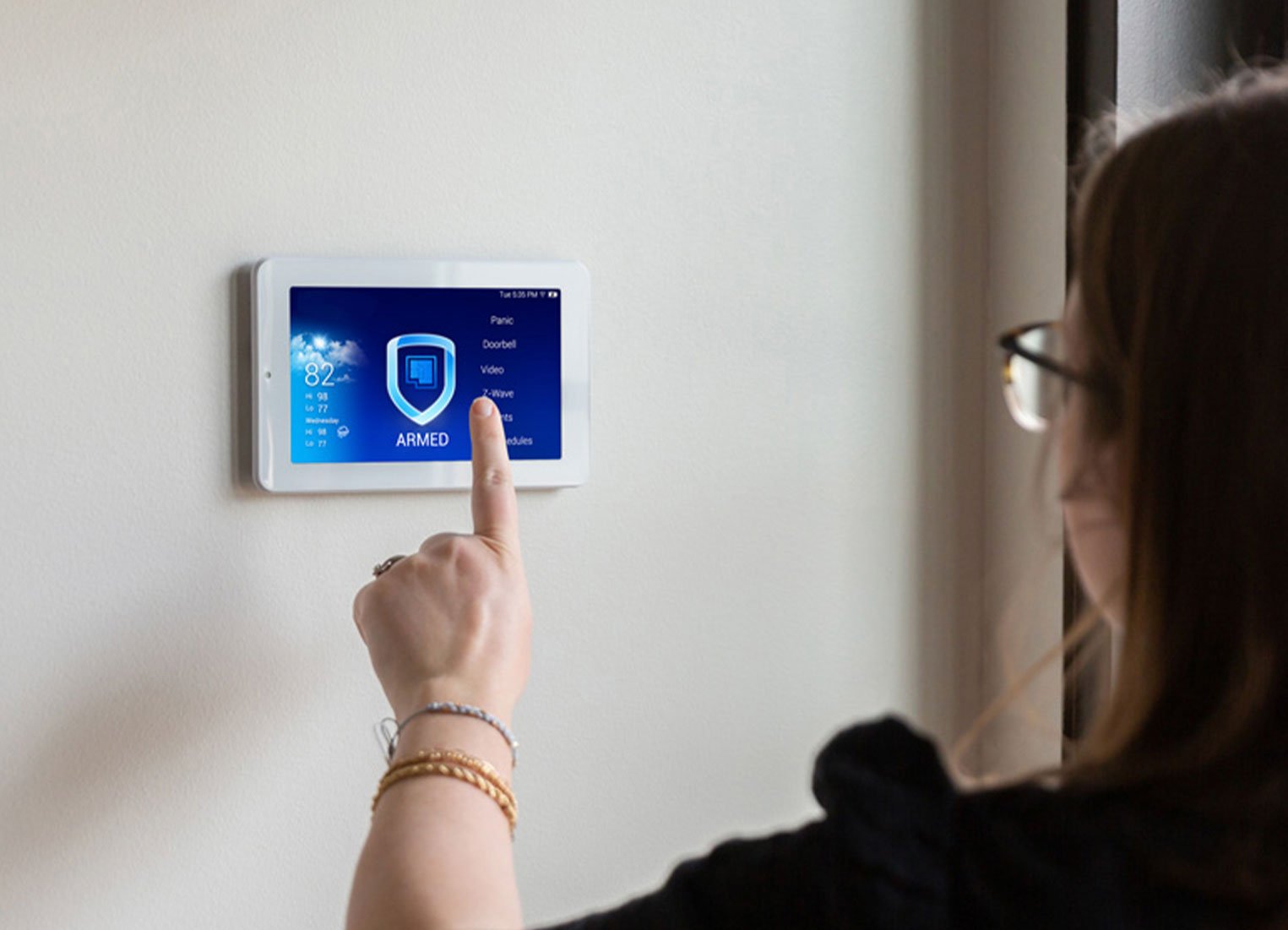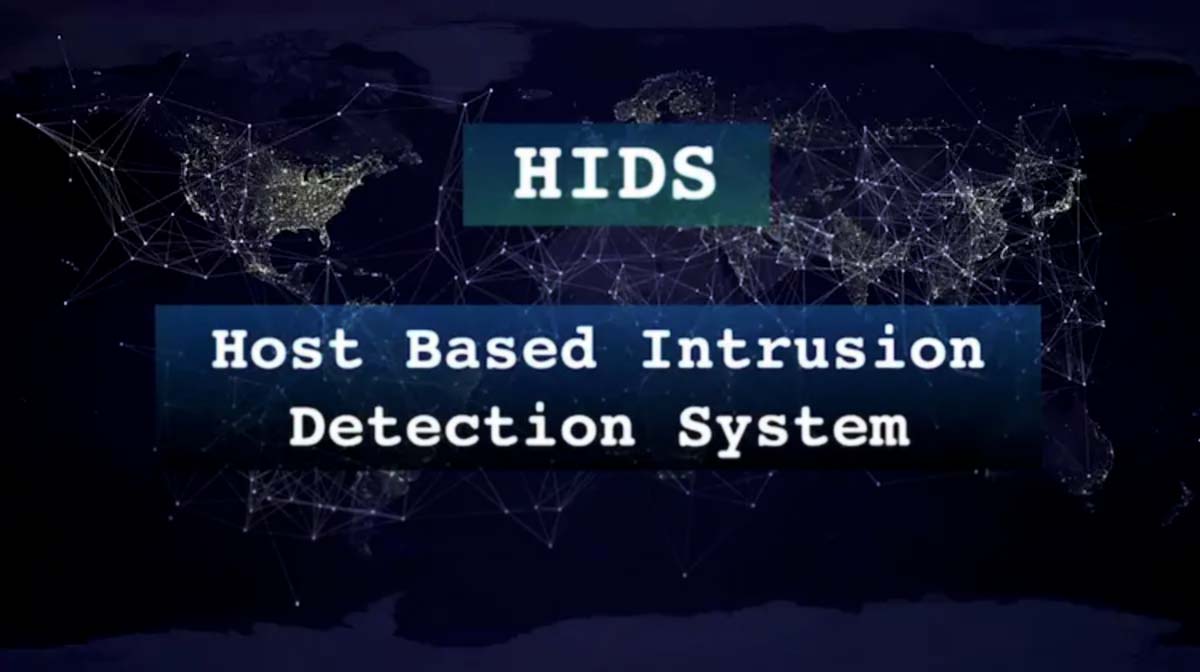Home>Home Security and Surveillance>How Could An Intrusion Detection System Be Configured To Detect A FIN Scan


Home Security and Surveillance
How Could An Intrusion Detection System Be Configured To Detect A FIN Scan
Modified: March 6, 2024
Discover how to configure your home security and surveillance system to effectively detect and prevent FIN scans with an advanced intrusion detection system.
(Many of the links in this article redirect to a specific reviewed product. Your purchase of these products through affiliate links helps to generate commission for Storables.com, at no extra cost. Learn more)
Introduction
Welcome to the world of home security and surveillance, where protecting your loved ones and belongings has become more important than ever. With the advancements in technology, homeowners now have access to a wide range of security options, including home security systems, surveillance cameras, and intrusion detection systems (IDS).
In this article, we will delve into the world of IDS and explore how these systems can be configured to detect a specific type of network attack known as a FIN scan. We will discuss what FIN scans are, the role of IDS in detecting such attacks, and the steps involved in configuring an IDS to effectively identify and mitigate FIN scan attempts.
But before we dive into the technicalities, let’s understand what exactly a FIN scan is. A FIN scan is a type of stealthy network scan used by attackers to identify open ports on a target system. It involves sending TCP packets with the FIN (finish) flag set to a specific port and observing the response. If the port is closed, the target system will send a RST (reset) packet in response. However, if the port is open, it will silently drop the FIN packet, giving the attacker the indication that the port is open and potentially vulnerable.
Now that we have a basic understanding of what a FIN scan is, let’s move on to the role of an IDS in detecting such attacks. Intrusion Detection Systems are a crucial component of modern cybersecurity strategies. They monitor network traffic and system activities in real-time, looking for patterns and anomalies that may indicate a security breach or an attempt to exploit vulnerabilities.
Configuring an IDS to detect a specific type of attack, such as a FIN scan, requires careful consideration and fine-tuning. It involves setting up rules and filters to analyze network packets, identifying patterns specific to FIN scans, and raising alerts or taking corrective actions when a potential attack is detected.
Choosing the appropriate IDS configuration depends on various factors such as the network environment, the level of threats faced, and the level of control desired. There are different types of IDS available, including network-based IDS (NIDS) and host-based IDS (HIDS), each with its own advantages and considerations.
In the following sections, we will walk through the steps involved in configuring an IDS to detect FIN scans. We will discuss the importance of tuning the IDS for optimal detection, monitoring and analyzing IDS alerts, fine-tuning IDS rules for FIN scan detection, and best practices for configuring an IDS to effectively protect against such attacks.
So, let’s embark on this journey of strengthening your home security by configuring an IDS to detect FIN scans and ensuring peace of mind for you and your loved ones.
Key Takeaways:
- Configuring an Intrusion Detection System (IDS) to detect FIN scans involves understanding the attack technique, fine-tuning IDS rules, and staying updated on the latest threats for effective network security.
- By following best practices, such as implementing a defense-in-depth approach and collaborating with the security community, homeowners can strengthen their network’s defense against stealthy FIN scans.
Read more: How To Test Intrusion Detection System
Understanding FIN Scans
In order to effectively configure an intrusion detection system (IDS) to detect FIN scans, it is important to have a clear understanding of what exactly FIN scans are and how they can potentially compromise network security.
A FIN scan is a type of stealthy network scan used by attackers to identify open ports on a target system. It makes use of the FIN (finish) flag in TCP packets to probe a range of ports and determine their status. When a TCP packet with the FIN flag is sent to a specific port, it indicates that the source device has finished sending data to that port. The target device, in response, should send either a RST (reset) packet if the port is closed or silently drop the packet if the port is open.
By analyzing the response to these FIN packets, an attacker can infer whether a specific port is open or closed. If the target system responds with a RST packet, it indicates that the port is closed and protected. However, if the target system silently drops the packet, it suggests that the port is open and may be susceptible to potential attacks.
One of the reasons why FIN scans are considered stealthy is because the FIN flag is typically used to indicate the end of a connection. By sending a single packet with only the FIN flag set, attackers can avoid generating excessive network traffic that may attract the attention of network administrators.
Furthermore, FIN scans can be used to bypass certain firewall configurations that rely on inspecting the contents of the packets or flags. Firewalls often inspect packets with the SYN flag set (indicating the start of a new connection) but may not analyze packets with the FIN flag, assuming that they are part of an already established connection.
It’s worth noting that FIN scans are just one of many techniques used by attackers to probe network systems for potential vulnerabilities. While they may not directly cause any harm or compromise a system, they provide valuable information to attackers about the network’s security posture and potential entry points for further exploitation.
Now that we have a clear understanding of what FIN scans are and how they can pose a threat to network security, we can move on to configuring an IDS to effectively detect and prevent these types of attacks.
Intrusion Detection Systems (IDS)
Intrusion Detection Systems (IDS) play a crucial role in safeguarding network security by monitoring and analyzing network traffic and system activities. They detect and respond to potential security breaches, including attempts to exploit vulnerabilities such as FIN scans.
There are two main types of IDS: network-based IDS (NIDS) and host-based IDS (HIDS).
Network-based IDS (NIDS)
NIDS monitors network traffic by analyzing packets as they traverse the network. It can be implemented as a dedicated hardware appliance or as software running on a network device. NIDS analyzes packets in real-time, comparing them against a set of predefined rules and detecting patterns or anomalies that may indicate an intrusion or an attempt to exploit vulnerabilities.
One of the advantages of NIDS is its ability to monitor all traffic passing through a specific network segment, allowing for comprehensive detection and analysis. NIDS can monitor both incoming and outgoing traffic, making it an effective defense against various network-based attacks.
Host-based IDS (HIDS)
HIDS, on the other hand, focuses on monitoring activities and events on individual hosts or endpoints within a network. It operates by installing software agents on each host that collect and analyze system logs, file changes, and user activities. HIDS can provide more granular visibility into host-level activities and detect attacks that may go unnoticed by network-based IDS.
By analyzing system logs and events, HIDS can identify suspicious activities that may indicate a compromise or an attempt to exploit vulnerabilities. HIDS can raise alerts or take actions such as logging the event, blocking certain activities, or notifying system administrators.
While NIDS and HIDS are different in their approach, they are often used in conjunction to provide layered defense and comprehensive detection capabilities.
Both NIDS and HIDS can be leveraged to detect and respond to FIN scans. By analyzing network traffic or host-level events, IDS can identify patterns specific to FIN scans and raise alerts whenever such activity is detected. This allows network administrators to take timely action and mitigate potential risks to network security.
However, it’s important to note that IDS systems are not foolproof and may generate false positives or miss certain attacks. Therefore, configuring an IDS to effectively detect FIN scans requires careful consideration and fine-tuning, which we will explore in detail in the following sections.
Now that we understand the role of IDS in detecting intrusions and attacks, let’s dive into the process of configuring an IDS to effectively detect and respond to FIN scans.
Configuring an IDS to Detect FIN Scans
Configuring an Intrusion Detection System (IDS) to effectively detect and respond to FIN scans requires a systematic approach and careful consideration of various factors. By following the steps outlined below, you can optimize your IDS to provide robust protection against FIN scan attacks.
- Understand the IDS capabilities: Before configuring your IDS, it’s essential to familiarize yourself with its features, capabilities, and configuration options. Each IDS may have different settings and customization options that can impact its ability to detect and respond to FIN scans.
- Configure network monitoring: IDS should be configured to monitor network traffic effectively. This involves specifying the network interfaces or segments to monitor and setting up appropriate filters or rules to capture relevant network packets. Ensure that your IDS is configured to capture both incoming and outgoing network traffic to detect potential FIN scans.
- Create FIN scan detection rules: IDS relies on rules or signatures to identify specific patterns or behaviors indicative of a FIN scan. Create rules specifically designed to detect FIN scans, taking into consideration the characteristics of FIN packets and their response. Fine-tune these rules to minimize false positives and maximize accurate detection.
- Integrate threat intelligence: Incorporate threat intelligence feeds or databases into your IDS configuration. These sources provide up-to-date information on known malicious IP addresses, domains, or signature patterns associated with FIN scans. Integrating threat intelligence can enhance the detection capabilities of your IDS and provide a proactive defense against emerging threats.
- Enable real-time alerting: Configure your IDS to generate real-time alerts when a FIN scan is detected. Alerts can be sent via email, SMS, or logged in a central dashboard for monitoring. Ensure that the alerts are properly categorized and prioritized, enabling you to quickly identify and respond to potential FIN scan attempts.
- Implement automated response measures: Consider implementing automated response measures to mitigate the impact of FIN scans. This may include blocking the source IP addresses, dropping packets from suspicious sources, or adjusting firewall rules to prevent further access attempts from detected malicious entities.
- Regularly update and maintain your IDS: Keep your IDS up-to-date by applying patches, updates, and the latest threat intelligence. Regularly review and fine-tune your IDS ruleset, taking into account any new attack techniques or vulnerabilities that emerge. Stay proactive in maintaining the effectiveness of your IDS against evolving threats.
By following these steps and continually refining your IDS configuration, you can enhance its ability to detect and respond to FIN scan attacks. Remember that configuring an IDS is an ongoing process, requiring constant monitoring, analysis, and adjustment to ensure optimal protection against network-based threats.
In the next section, we will explore the considerations in choosing the appropriate IDS configuration to detect FIN scans effectively.
Choosing the Appropriate IDS Configuration
When it comes to choosing the appropriate Intrusion Detection System (IDS) configuration to detect FIN scans, several factors need to be considered. Each network environment has unique requirements and characteristics that can influence the selection of the most suitable IDS configuration. Let’s explore some key considerations:
- Network Architecture: Evaluate the network architecture, including the number of subnets, network segments, and the overall complexity. This will help determine whether a network-based IDS (NIDS) or a host-based IDS (HIDS) is more appropriate. In larger networks with multiple subnets, implementing a combination of NIDS and HIDS can provide comprehensive coverage.
- Network Traffic Volume: Consider the volume of network traffic flowing through your network. A high traffic volume may require a more robust IDS appliance or distributed IDS deployment to handle the load effectively. Ensure that the selected IDS configuration aligns with the network’s capacity and performance requirements.
- Security Objectives: Clearly define your security objectives and the level of protection needed against FIN scans. This will help determine the scope and sensitivity of the IDS ruleset, as well as the response measures to be implemented. Some IDS systems offer different levels of sensitivity or predefined rule sets tailored to specific security objectives.
- Expertise and Resources: Consider the expertise and resources available for IDS maintenance and monitoring. Some IDS solutions require dedicated personnel to manage and fine-tune the system effectively. Evaluate your team’s skillset and availability to ensure that the chosen IDS configuration can be properly supported.
- Integration with Existing Security Infrastructure: Assess the compatibility and integration capabilities of the IDS with your existing security infrastructure. This includes firewalls, SIEM (Security Information and Event Management) systems, and incident response processes. An IDS that seamlessly integrates with your security ecosystem will allow for more efficient detection and response to FIN scan threats.
- Scalability: Consider the scalability of the IDS solution to accommodate future growth or changes in your network environment. Ensure that the selected IDS configuration can scale and adapt to evolving requirements, such as increased network traffic or the addition of new systems or subnets.
By considering these factors and aligning them with your specific network environment and security objectives, you can choose an appropriate IDS configuration that best suits your needs. Remember that selecting the right IDS is just the first step; proper configuration, monitoring, and maintenance are equally important to ensure effective detection and response to FIN scan attempts.
In the next section, we will delve into the process of tuning the IDS for optimal detection of FIN scans.
Configure the IDS to look for a series of TCP packets with the FIN flag set, but no corresponding connection establishment. This indicates a FIN scan, a common reconnaissance technique used by attackers.
Read more: How To Create Intrusion Detection System
Tuning the IDS for Optimal Detection of FIN Scans
Once you have chosen the appropriate Intrusion Detection System (IDS) configuration, the next step is to fine-tune the IDS to ensure optimal detection of FIN scans. Tuning involves adjusting various settings and parameters to enhance the IDS’s ability to accurately detect and respond to FIN scan attempts. Here are some key considerations for tuning your IDS:
- Refine IDS Rules: Review and fine-tune the IDS rules specifically designed to detect FIN scans. Analyze the characteristics of FIN packets and their responses to update the rulesets accordingly. Regularly monitor and evaluate the effectiveness of these rules to minimize false positives and false negatives.
- Set Thresholds: Establish appropriate thresholds for generating alerts. Determine the number of FIN scan attempts within a specific timeframe that trigger an alert. Setting thresholds helps avoid overwhelming the system with excessive alerts while capturing relevant activity.
- Adjust Sensitivity: Fine-tune the sensitivity settings of the IDS to balance accurate detection with false positive rates. Increasing sensitivity may result in a higher chance of detecting FIN scans but could also lead to more false positives. Regularly monitor and adjust sensitivity settings based on real-world data and threat intelligence.
- Configure Packet Capture: Configure the IDS to capture packets related to FIN scan attempts for further analysis. This allows you to investigate the details of the attack, understand the context, and gather additional information for incident response and forensic analysis.
- Utilize Anomaly Detection: Consider implementing anomaly detection techniques in addition to signature-based detection. Anomaly detection helps identify unusual behavior that deviates from normal traffic patterns, providing an extra layer of defense against sophisticated FIN scan attacks.
- Collaborate with Threat Intelligence: Foster collaboration with threat intelligence providers or services to stay updated on the latest information related to FIN scan techniques and malicious sources. Leverage this intelligence to enhance your IDS configuration and continuously improve detection capabilities.
- Regularly Review and Update: Keep your IDS configuration up to date by regularly reviewing and updating rule sets, thresholds, sensitivity levels, and other relevant settings. Stay proactive in adapting to emerging threats and evolving attack techniques to ensure optimal detection of FIN scans.
Tuning your IDS is an iterative process that requires continuous monitoring, analysis, and adjustment. Regularly assess the effectiveness of your IDS configuration, analyze captured data, and incorporate feedback from incident response activities to improve the detection and response to FIN scan attempts.
In the next section, we will explore the importance of monitoring and analyzing IDS alerts to effectively detect and mitigate FIN scans.
Monitoring and Analyzing IDS Alerts
Monitoring and analyzing alerts generated by your Intrusion Detection System (IDS) is a critical step in detecting and mitigating FIN scans effectively. By carefully monitoring and analyzing IDS alerts, you can identify potential FIN scan attempts, investigate the details of the attacks, and take proactive measures to protect your network. Here’s how to make the most of your IDS alerts:
- Centralize Alert Management: Set up a central system or dashboard to aggregate and manage IDS alerts. This allows for easy visibility and monitoring of alerts from various sources within your network.
- Establish Alert Prioritization: Define a clear framework for prioritizing IDS alerts. Categorize alerts based on severity levels, potential impact, and risk to your network. This helps focus your attention on critical alerts that require immediate action.
- Automate Alert Handling: Utilize automation tools to streamline the handling of IDS alerts. Implement workflows and response processes that automatically assign, escalate, and track the lifecycle of alerts. This improves efficiency and ensures that no alerts slip through the cracks.
- Investigate Alerts: Conduct thorough investigations of IDS alerts to understand the details and context of each potential FIN scan attempt. Analyze captured network packets, review logs, and perform forensics analysis to gather evidence and identify the extent of the attack.
- Correlate Alert Data: Use correlation techniques to identify patterns and relationships between IDS alerts. Correlating alerts helps distinguish isolated events from coordinated attacks, providing a more comprehensive understanding of the threat landscape.
- Collaborate with Incident Response Team: Foster collaboration between your IDS team and the incident response team. Effective communication and knowledge sharing facilitate timely responses, coordination of efforts, and the implementation of appropriate countermeasures against FIN scan attacks.
- Update Alerts and Rules: Regularly review and update your IDS alerts and rules based on the findings from investigations and incident response activities. Incorporate new malware signatures, attack vectors, or FIN scan techniques to enhance the detection capabilities of your IDS.
- Continuously Improve Detection: Treat IDS alerts as a valuable source of information for continuous improvement. Analyze patterns, trends, and commonalities in FIN scans detected by your IDS to refine and optimize your detection mechanisms.
By actively monitoring and analyzing IDS alerts, you can quickly detect and respond to potential FIN scan attempts, minimizing their impact on your network’s security. Regular evaluation and enhancement of your alert management processes and capabilities will ensure a proactive and effective defense against FIN scans.
In the next section, we will explore the importance of fine-tuning IDS rules specifically for detecting FIN scans.
Fine-tuning the IDS Rules for FIN Scan Detection
Fine-tuning the Intrusion Detection System (IDS) rules specifically for detecting FIN scans is crucial to ensure accurate and effective detection of these stealthy network scans. By refining the IDS rules, you can minimize false positives, improve detection accuracy, and enhance your network’s security. Here are some key steps to fine-tune IDS rules for FIN scan detection:
- Understand FIN Packet Characteristics: Gain a deep understanding of the characteristics of FIN packets and their responses. Familiarize yourself with the structure of FIN packets, including the TCP flags and the expected responses from open and closed ports. This knowledge will help you craft precise and accurate IDS rules.
- Analyze Network Traffic Captures: Collect and analyze network traffic captures that include FIN scan attempts. Carefully examine the captured packets to identify common patterns, source IP addresses, or specific payload characteristics associated with FIN scans.
- Create Custom IDS Rules: Develop custom IDS rules specifically designed to detect FIN scans based on your analysis and findings. Consider factors such as the TCP flags, specific ports targeted for scanning, and the response behavior of the target system. Craft rules that accurately identify FIN scan attempts while minimizing false positives.
- Optimize Rule Thresholds: Set appropriate thresholds for the detection rules to balance detection accuracy and false positive rates. Adjust the threshold values, such as the number of packets matching the rule within a specific time window, to find the optimal balance for your specific network environment.
- Incorporate Signature Updates: Stay up to date with the latest threat intelligence and regularly update your IDS with new signature patterns associated with FIN scans. Monitor security forums, vendor updates, and threat feeds to ensure that your IDS has the most current and relevant signatures.
- Validate and Test the Rules: Validate and test your IDS rules to ensure their effectiveness. Simulate controlled FIN scan attempts within a test environment to verify that the IDS properly detects and raises alerts for these scans. Fine-tune the rules based on the results of the validation tests.
- Collaborate with the Security Community: Engage with the security community to share knowledge and exchange insights about FIN scan detection techniques. Participate in forums, conferences, or online communities to stay informed about emerging trends and best practices in detecting and mitigating FIN scans.
- Regularly Review and Update Rules: Continuously review and update your IDS rules based on new attack techniques or modifications in FIN scan behavior. Regularly analyze IDS logs, investigate alerts, and gather feedback from incident response activities to refine and optimize your rulesets.
Remember, fine-tuning IDS rules is an iterative process that requires ongoing monitoring, analysis, and adjustment. By carefully crafting and optimizing your IDS rules for FIN scan detection, you can significantly enhance your network’s ability to detect and respond to these stealthy attacks.
In the next section, we will explore some best practices for configuring an IDS to effectively detect FIN scans.
Best Practices for Configuring an IDS to Detect FIN Scans
Configuring an Intrusion Detection System (IDS) to effectively detect FIN scans requires careful consideration and adherence to best practices. By following these recommended guidelines, you can optimize your IDS configuration and enhance your network’s security against FIN scan attacks:
- Stay Informed: Stay updated on the latest FIN scan techniques and attack vectors. Monitor security news, research papers, and threat intelligence sources to stay informed about emerging threats and new evasion techniques.
- Customize IDS Rules: Tailor IDS rules specifically for FIN scan detection. Create custom rules that focus on the specific characteristics of FIN scan packets and their expected responses. Regularly review and update these rules based on the evolving threat landscape.
- Implement Defense-in-Depth: Deploy multiple layers of defense to strengthen your network’s security. Combine the use of network-based IDS (NIDS), host-based IDS (HIDS), firewalls, and other security measures to create a robust defense-in-depth strategy.
- Follow Principle of Least Privilege: Minimize the attack surface of your network by implementing the principle of least privilege. Restrict access to critical systems and services, ensuring that only necessary ports are open, reducing the likelihood of successful FIN scans.
- Regularly Update Signatures: Keep your IDS signature databases up to date. Regularly update the IDS with the latest threat intelligence feeds and signature patterns associated with FIN scans. This ensures that your IDS is equipped to detect the most current and sophisticated attacks.
- Enable Traffic Encryption: Implement encryption protocols, such as TLS/SSL, to protect sensitive network traffic. Encrypting traffic makes it harder for attackers to analyze packets and circumvent IDS detection.
- Enable Logging and Monitoring: Implement comprehensive logging and monitoring capabilities. Capture and analyze IDS logs to identify patterns, track incidents, and detect any potential evasion techniques employed by attackers.
- Perform Regular Vulnerability Assessments: Conduct regular vulnerability assessments and penetration tests to identify and address any potential weaknesses in your network’s defenses. This helps ensure that your IDS is appropriately configured and able to detect and respond to FIN scans.
- Implement Network Segmentation: Separate your network into different segments or zones to limit the impact of FIN scan attacks. Implement strict ingress and egress filtering rules across network segments to minimize the lateral movement of attackers.
- Collaborate with the Security Community: Engage with the broader security community to share insights, best practices, and lessons learned. Participate in security forums, conferences, and communities to gain valuable knowledge and leverage collective expertise to improve your IDS configuration.
By implementing these best practices, you can enhance the effectiveness of your IDS in detecting and responding to FIN scans. Regularly review and update your IDS configuration, stay proactive in enhancing your security posture, and adapt to emerging threats to ensure the continuous protection of your network.
Now that you have a solid understanding of configuring an IDS to detect FIN scans, you can confidently strengthen your network’s defense against these stealthy attacks.
Conclusion
In today’s rapidly evolving threat landscape, configuring an Intrusion Detection System (IDS) to effectively detect and respond to FIN scans is paramount to safeguarding your network’s security. FIN scans, being stealthy and capable of identifying potential vulnerabilities, necessitate a proactive approach to detection and mitigation.
By understanding the characteristics of FIN scans and the role of IDS in detecting them, you can begin the process of configuring your IDS to effectively identify these types of attacks. Through careful consideration of network architecture, traffic volume, and security objectives, you can choose the appropriate IDS configuration that aligns with your specific needs.
Fine-tuning your IDS rules for FIN scan detection, based on your analysis of packet captures and threat intelligence, is crucial to minimizing false positives and maximizing accurate detection. Regularly reviewing and updating IDS rules, integrating threat intelligence, and collaborating with the security community ensures that your IDS remains effective against emerging threats.
Monitoring and analyzing IDS alerts, centralizing alert management, investigating suspicious activities, and collaborating with incident response teams play a vital role in timely response and mitigation of FIN scans. Regularly reviewing and updating your IDS configuration, adhering to best practices, and implementing a defense-in-depth approach strengthens your network’s security posture.
In conclusion, configuring an IDS to detect FIN scans requires a comprehensive understanding of the attack technique, an iterative process of fine-tuning and updating rules, and active monitoring and analysis of alerts. By following best practices and staying vigilant in the face of ever-evolving threats, you can effectively detect, respond to, and mitigate FIN scans, bolstering your network’s security and ensuring the safety of your digital assets.
Frequently Asked Questions about How Could An Intrusion Detection System Be Configured To Detect A FIN Scan
Was this page helpful?
At Storables.com, we guarantee accurate and reliable information. Our content, validated by Expert Board Contributors, is crafted following stringent Editorial Policies. We're committed to providing you with well-researched, expert-backed insights for all your informational needs.













